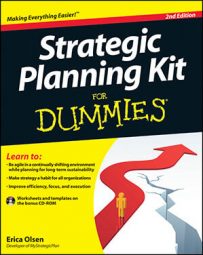The fact that you’ll leave your business at some point is a given. If you’ve been ignoring this point, you’re not alone. People start and run businesses for numerous reasons, and so much energy goes into that process that most owners never really consider how it may end.
The reason most business owners avoid this entire discussion is because it’s not the most inspiring topic. Nevertheless, setting a clear exit strategy is imperative to ensuring that your years of hard work pay off in the end. Take a self-assessment to see where you are with your exit planning.
Planning an exit strategy shouldn’t begin when you decide to sell your company. Although setting aside time for planning in smaller organizations is hard because you don’t have a person who can dedicate her time to strategic planning, take the time to make strategy part of your culture. Knowing your options and a few best practices can make this task seem less intimidating.
Don’t leave anyone out of the planning process because, in a smaller organization, you run the risk of alienating some people. Although you may not think that including everyone on the staff is appropriate, how will it look if everyone but two or three members is included? Be sure to find ways to engage everyone in the process.
The first phase of your transition is called exit planning — directing how to transfer the business when you leave. Exit planning is a key part of your organization’s strategic direction because it dictates how you set up your business for the long run. The following list outlines the four different ways you can exist your business. Each one results in a different outcome.
Transfer ownership to a family member. If you’ve groomed a relative to take over, this approach is probably your most likely exit strategy.
Sell to employees or other owners. If you have other owners or a pool of dedicated employees, this approach will most likely ensure your business lives on under its current operating state.
Sell to a third party. Depending on your business’s valuation, this approach may be the most lucrative to you and other owners.
Liquidate. Probably the most unattractive, this exit strategy is often used when no other options exist.
The second phase of your transition is succession planning, which involves determining who runs the business when you depart. Succession planning is necessary for three of the four strategies listed in this section (not liquidation).
Consider drafting your own personal vision statement that includes your exit strategy for your business. This statement doesn’t necessarily need to be shared with your staff, but it can guide the strategic growth of your organization.
When creating your vision, consider the following: Do you want to grow or stay small? If you want to grow, by how much? What future do you want to create for your business? Being crystal clear about your owner’s vision is really important, because if you’re fuzzy on your vision, it will never materialize.

